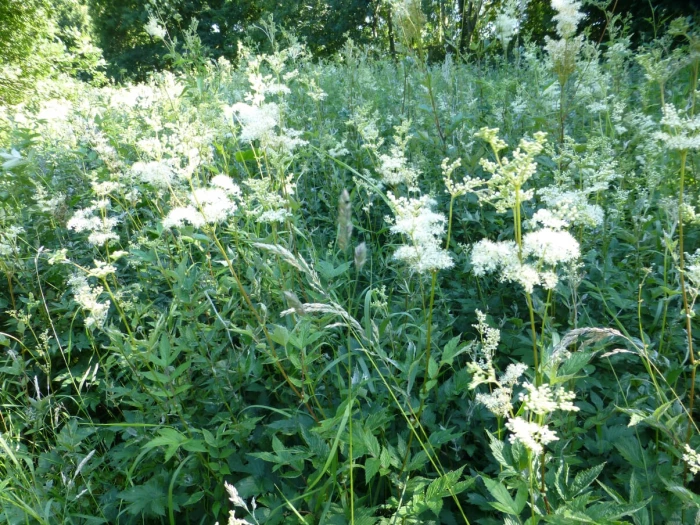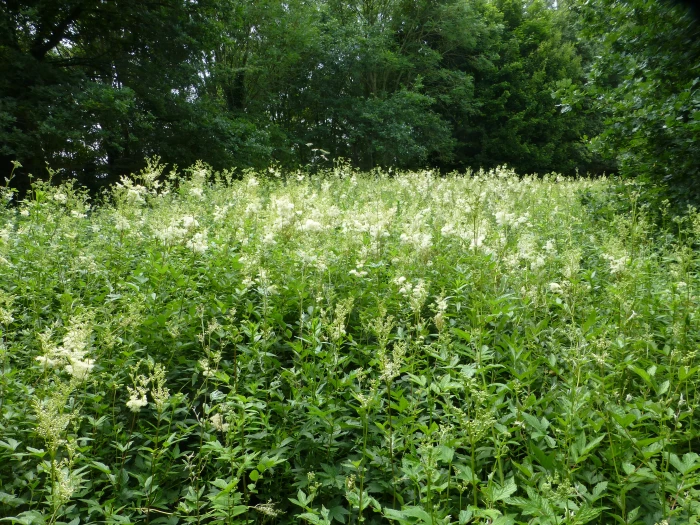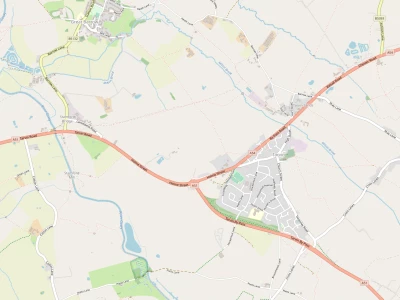Meadowsweet
(Filipendula Ulmaria)
The title of the email said, "We could do with Smellevision" and the email itself was just four words long: "The meadowsweet is out!" At present, the knowledge I have of the changes within the woodland is gleaned mostly through the emails and photographs sent to me by my fellow-Trustee, John Daines, and he knows that the area of meadowsweet is a particular favourite of mine. Being aware of the distinctive sweet aroma and then coming across the bank of feathery white flowers is truly a joy!
Of all of the experimental wild flower areas set up by Jim Grogan and his volunteers in the early days of the woodland, the area of meadowsweet is, in my opinion, by far the most successful. And, when seen en masse, it is a beautiful sight with its frothy white flowers set against the gentle green tints of its foliage. Meadowsweet reputedly flourishes in "damp soil in grassland and heathland and in areas where water levels rise and fall" – another example of our drainage scheme from the A51 having surprising consequences! (See TarvinOnLine of 29th May 2020.)
Its name, together with the longevity of its scent, suggests some of the traditional uses of Meadowsweet. It was once valued for its lasting fragrance; the dried flowers were strewn across floors to perfume the home and it seems that it was a particular favourite of Queen Elizabeth I, who used the plant instead of straw on her chamber floors. It is also edible and can be used as flavouring in a similar way to elderflower. It is said that the name actually derives from its use in Anglo-Saxon times to flavour mead. The flowers can be added to stewed fruit and jams, giving them a subtle almond flavour and, once dried, are used in potpourri.
Meadowsweet has many medicinal properties. At a time before medicines for pain were widespread, the whole plant was steeped in water to make a tea which could be used as a remedy for an acidic stomach. The painkilling properties are thanks to the presence of Salicylic Acid, which could also be derived (and hence named) by herbalists from the bark of Willow trees (Salix is the Latin name for the Willow family.) Felix Hoffmann (a name very familiar to Organic Chemists!) used Salicylic Acid from Meadowsweet to synthesise a new painkilling drug, Acetylsalicylic Acid. This was then named by his employers, Bayer AG, from Meadowsweet's old botanical name – Spirea ulmaria. Hence the drug became Aspirin – the very first of the class of drugs now known as non-steroidal anti-inflammatories (NSAIDs).
One of the local firms in Sandycroft when I was growing up on Deeside (Flintshire) was Graesser Salicylates. Their claim to fame was that they manufactured aspirin in the form of the most widely-purchased over-the-counter drug in Britain – Aspro. As is the case with Panadol and paracetamol tablets these days, it was then impossible to persuade people like my parents that they would get exactly the same benefit from generic aspirin tablets as they would from the much more expensive proprietary Aspro pills. It has to be said that both, however, were much more convenient than brewing up a tea from Meadowsweet plants. In such ways might one measure progress!
Quick Links
Get In Touch
TarvinOnline is powered by our active community.
Please send us your news and views.









